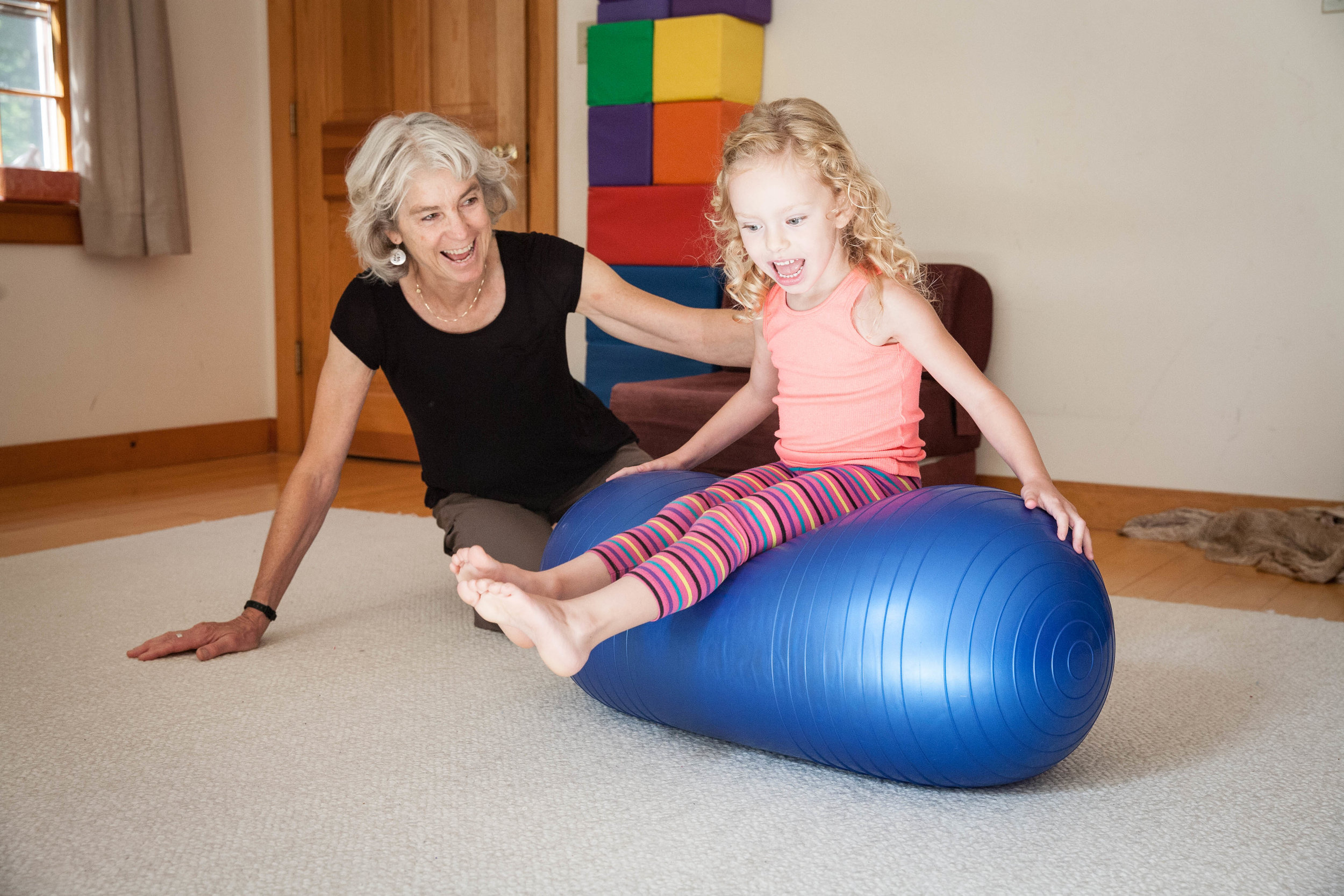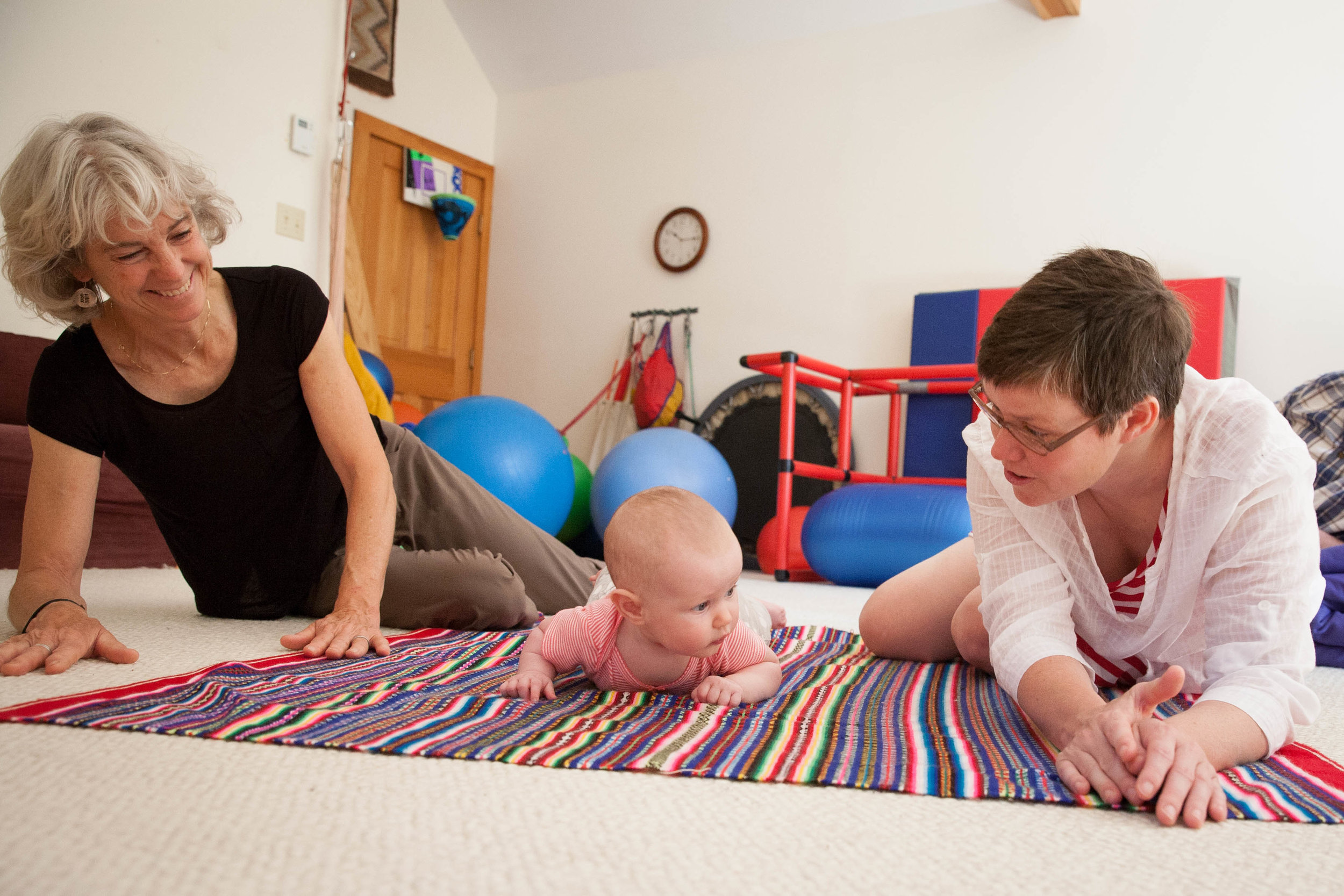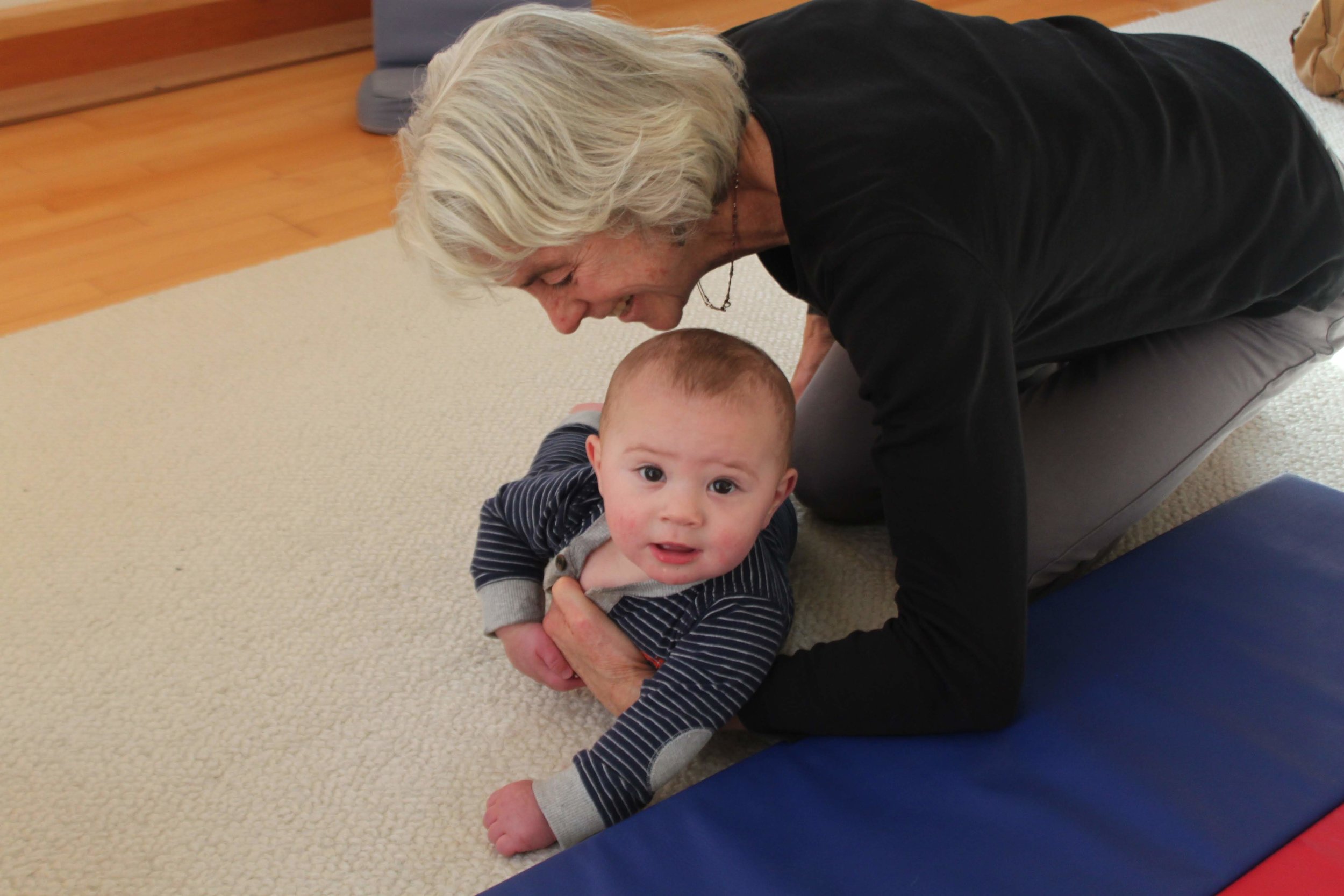Movements that Lead to Milestones: 4 - 8 Months Old:
This is a sequel to last month’s post about movement that leads to milestones in your baby’s first year. These various movement components begin emerging at around 4 months. As you look for them, keep in mind that these movements are what make it possible for your little one to push herself to sitting, pull herself to standing and eventually to take those first steps!
Sources: “The Components of Normal Movement During the First Year of Life and Abnormal Motor Development,” Lois Bly, RPT and “Normal Development of Functional Motor Skills: The First Year of Life,” Alexander, Boehme, Cupps
Important note: time periods for achieving these movement components are approximate and are meant to indicate developmental progressions rather than benchmarks.
4 - 5 Months Old:
Head
Noticeable increase in head control
On belly, can lift and hold head in midline; can tuck chin to look down at surface
Tucks chin and flexes head when pulled to sitting
Able to flex head sideways when tilted to side (also evident in side-lying)
Trunk
Landau Righting Reaction: on belly, swimming motion, arms remain flexed as extends spine and lifts arms and legs off surface at same time. Leads to increased strength, endurance, and coordination, all of which improve proximal stability that will underlie development of later motor skills.
On tummy, contour of back changing from relatively straight or flat to concave; can see spinal extensor muscles along length of spine. Lengthening and flattening of spine and extension of hips lead to pelvis lying more parallel to surface in prone. Joint capsules and soft tissue becoming softer and more flexible leading to increased movement of various joints of legs.
On tummy, arms drawn in closer to body, chin tucks and neck elongates in order to push up into extended arms, shifting center of gravity to lower stomach and thighs.
Weight shifting side to side on tummy leads to one arm being freed up in order to reach; sometimes shifts too far and rolls over accidentally.
Arms
On back, reaches further and brings hands together above body, not resting on body as was the case at 3 months
On back, brings hands and eyes to knees (increasing body awareness); often then rolls over to side
On back, can reach hands to feet as elbows begin to more fully extend
Can reach hands to head
One hand grasps object then other joins
4 months: hands more open as reach for object, thumb held close to palm; usually grasp with fingers but not thumb; no voluntary release yet; but they bring things to midline and play so that transferring from one hand to other occurs; wrist less flexed
5 months: symmetrical palmar grasp happens: fingers hold object against the base of the thumb; brings objects to mouth rather than mouth to objects because of increased mobility and flexibility
In sitting, increased trunk strength, upper back and neck able to straighten while lower back remains rounded
Legs
On back, knees bend and straighten separate from hips; hips can remain fully extended during knee action
On back, begin to symmetrically lift legs in air with knees extended and then forcefully bring feet down to surface
On back, learning to control grading movement, releasing bend in legs as they lower to surface. Also begins to lift just short distance, learning to control small range of motion
Can wiggle toes and feet holding legs up in air
On back, begin to “bridge,” pushing self with feet while lifting pelvis (look for how stable head, neck and upper trunk need to be for this to happen)
On back, lifts both legs and then loses symmetrical control resulting in legs falling over to one side; trunk may follow and this is the beginning of rolling. If the underside hip is flexed it will prevent rolling all the way over. When underside hip begins to extend, this leads to rolling over.
On belly, legs draw towards each other more and extend out to lengthen the body
6 Months Old:
Head
Good head control. Can move it against gravity from belly, back and sides.
On back, can lift head up and tuck chin
Trunk
Landau Righting Reaction: on belly, lifts legs and arms off surface at same time; matures when hips fully extend and elbows and knees straighten out.
Body Righting on Body Reflex present (on back, bend one leg up and over chest and upper body will log roll with it)
On tummy, supports self with straight arms – less of a curve in the lower spine (tummy muscles are working as well as back muscles)
Rolling from back to tummy: often starting by bending leg or head to get to side then stretching out and reaching to finish roll (curling up and lengthening out actions working together)
Sitting: straight back, can hold head up with chin tucked and long neck; doesn’t have to lean forward to support self
Arms
On belly, swimming motion: arms can be held outstretched as shoulder girdle strength increases along with pectorals and abdominals and work with spinal and hip extensors.
Independently pulls to sit (starts by bending head and legs then extends legs)
From sitting, can reach out for toys, etc. without losing balance and can extend arms forward to catch self when balance is lost
Legs
From back, can lift legs and hold above body; often reaches for them with hands
From standing, bears weight on both legs, can hold onto support by self; has enough muscle stability to be able to bounce
7 - 8 Months Old:
Often prefers to be on tummy - offers more possibilities for movement: pivot in circle, belly crawl, rolling to side-lying position and playing in side-lying. Now has enough trunk and head control to feel stable so that these movement possibilities expand.
Crawling: in order to push up into quadruped (crawling) position need:
to be able to lift head and extend neck against the force of gravity
to be able to support weight with shoulders and arms
to have strong enough tummy and back muscles to lift tummy from floor
to have strong enough hip muscles to hold the quadruped position and to balance on all fours
These abilities have all grown out of the movement components that have been developing in the first 6 to 7 months.















